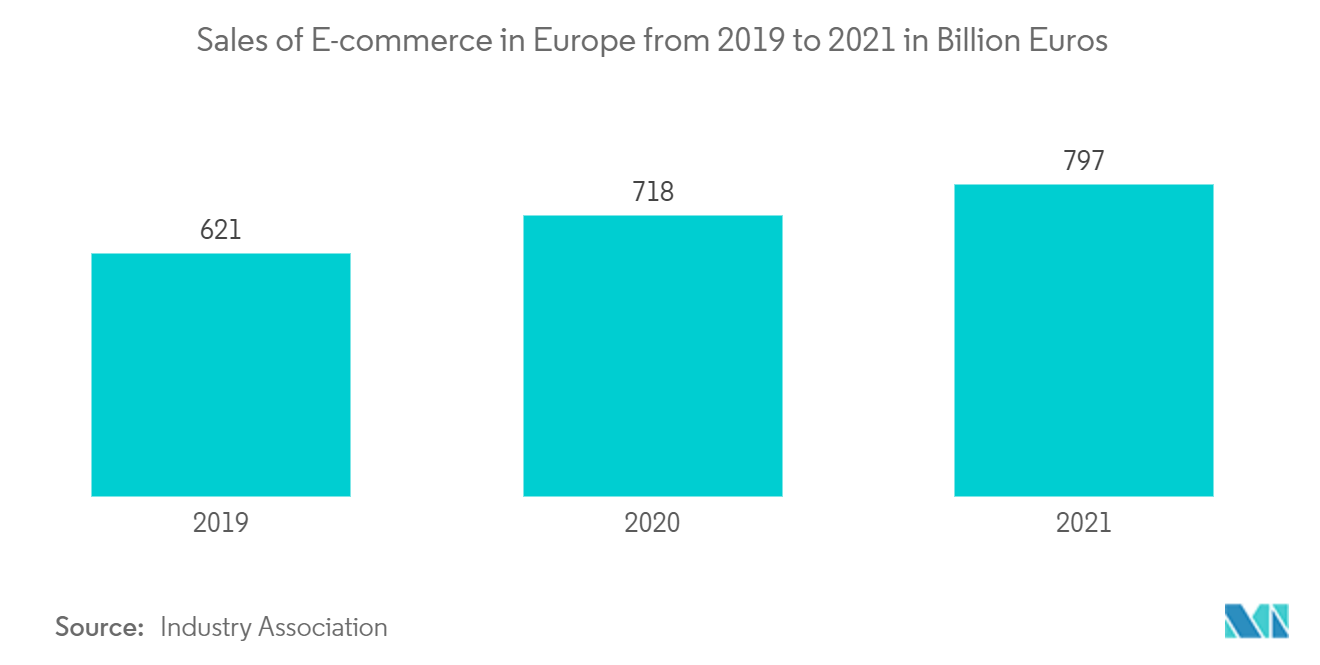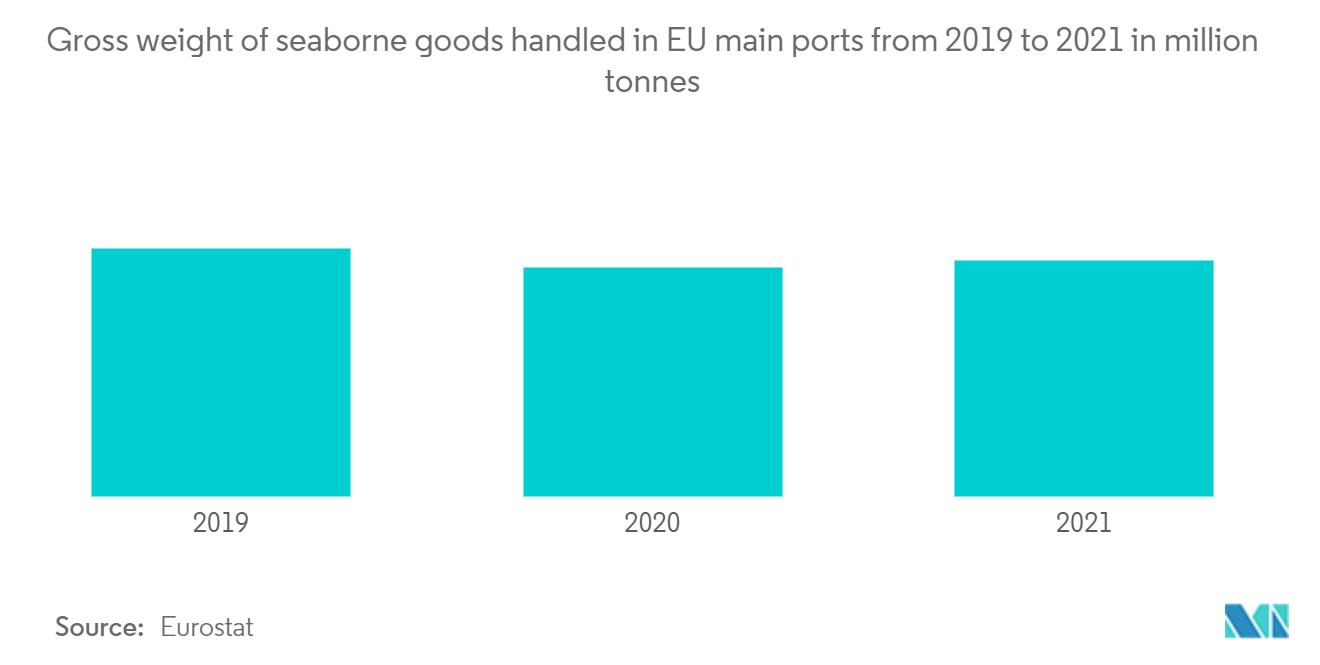Market Trends of Europe Less-Than Container Load Industry
This section covers the major market trends shaping the Europe Less-than Container Load Market according to our research experts:
Sales of E-commerce in Europe
The expansion of the less-than-containerload (LCL) sector of the market appears to be driven by smaller and more precise consignments, more frequent shipping, increased demand for e-commerce, and improved availability of supply chain data. While Eastern Europe saw stronger growth rates in 2021, Western Europe maintained its position in turnover with 63 percent. In comparison, Eastern Europe accounts for only 2% of overall European e-commerce income. Northern Europe had the biggest percentage of online shoppers (86%) for the first time, followed by Western Europe (84 percent). The Netherlands has the most internet consumers (94 percent), followed by Denmark and Sweden (both 92 percent).
Across the major trades, there was a significant increase in the number of customers requiring LCL cargo shipments, and while the reasons for this increased demand varied, it appears that the changing nature of trade flows and an evolving supply chain have created an environment where shipping smaller consignments more frequently makes sense.
Technology aids in the improvement of freight movement and the tracking of timestamps. Furthermore, in terms of combining client-specific consolidation and LCL, the better the data, the better the utilization management and solution creation for consumers.

Boosting Maritime Trade
The maritime cargo sector is seeing an increase in demand for cargo transportation via waterways, driven by considerations such as container safety and cost-effectiveness. Cargo ships are less costly than road and air transits for shipping commodities. Ships can transport more goods from one location to another in a shorter amount of time.
With over 80% of global commercial commerce handled by sea, maritime transport is the backbone of international trade and globalization. For the EU, which remains the world's largest exporter and second-largest importer, marine transport and all connected shipping services are critical to assisting European enterprises in competing worldwide.
The European Commission conducts an ongoing conversation with all of the EU's shipping and trading partners across the world, including the United States, China, India, Japan, and Russia, to strengthen the global seaborne trade system's stability. Bilateral agreements and talks are critical tools for resolving issues, removing barriers to international marine trade, and promoting great shipping ideals across the world.

